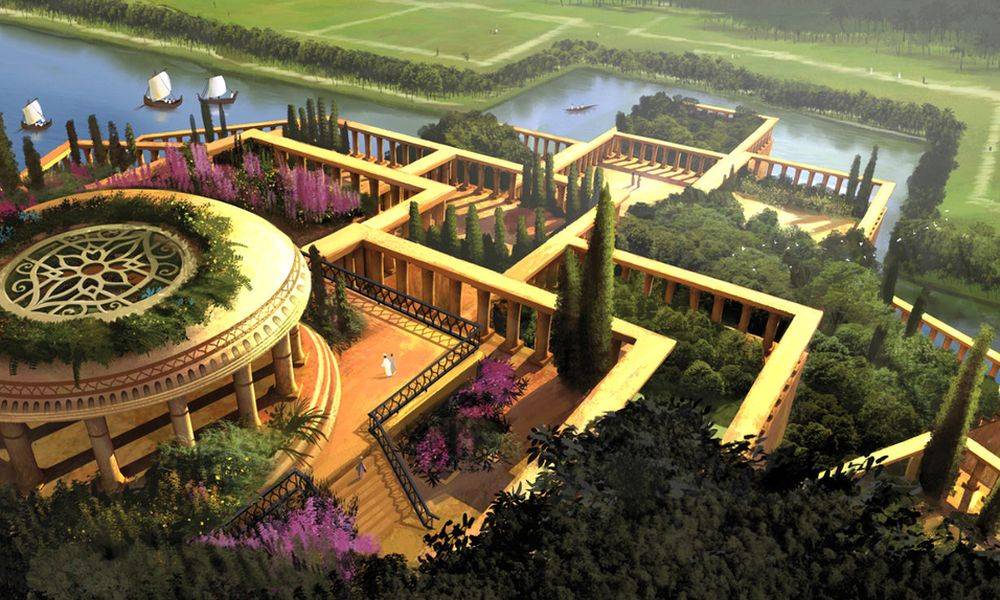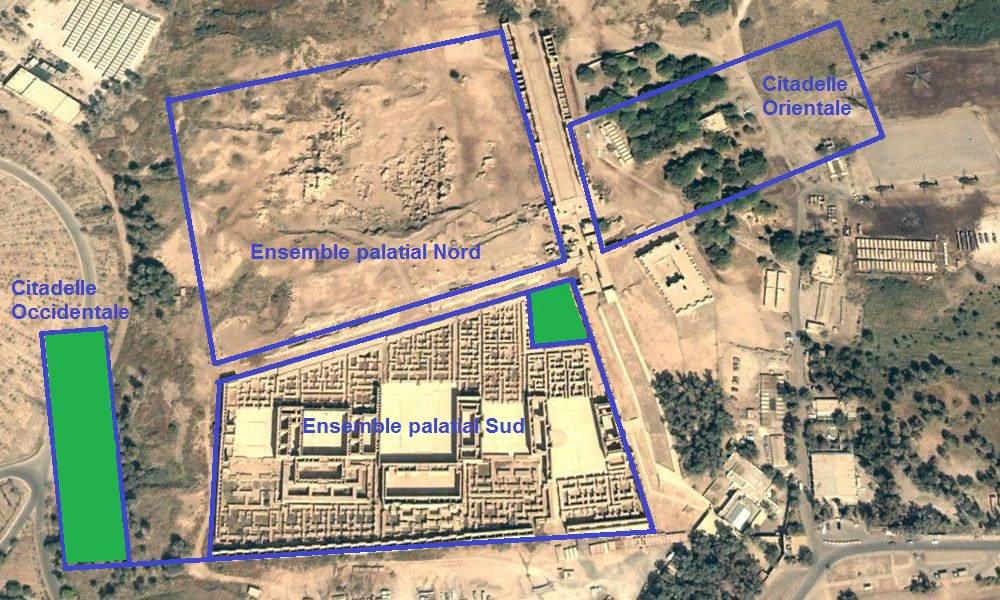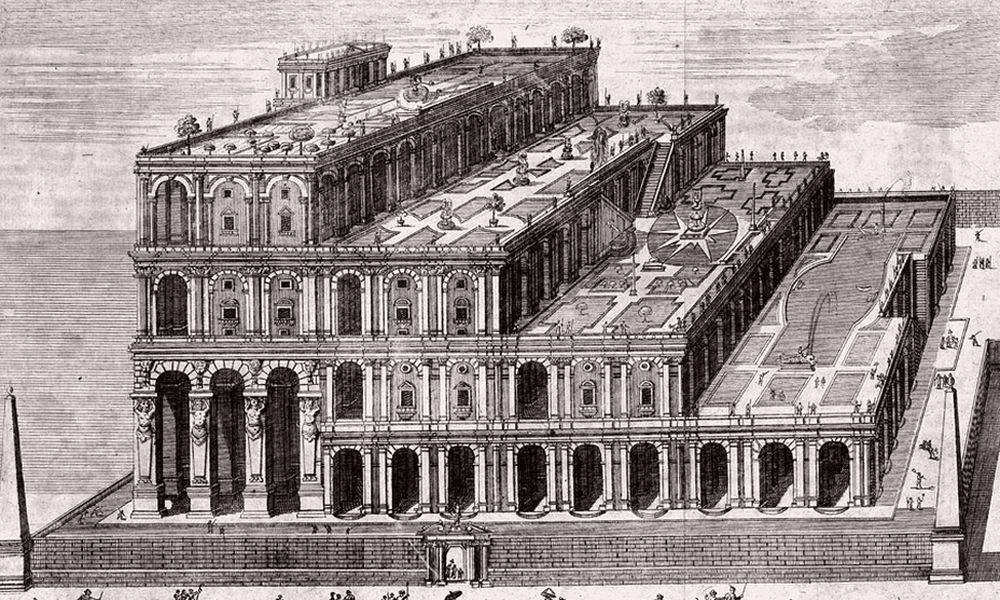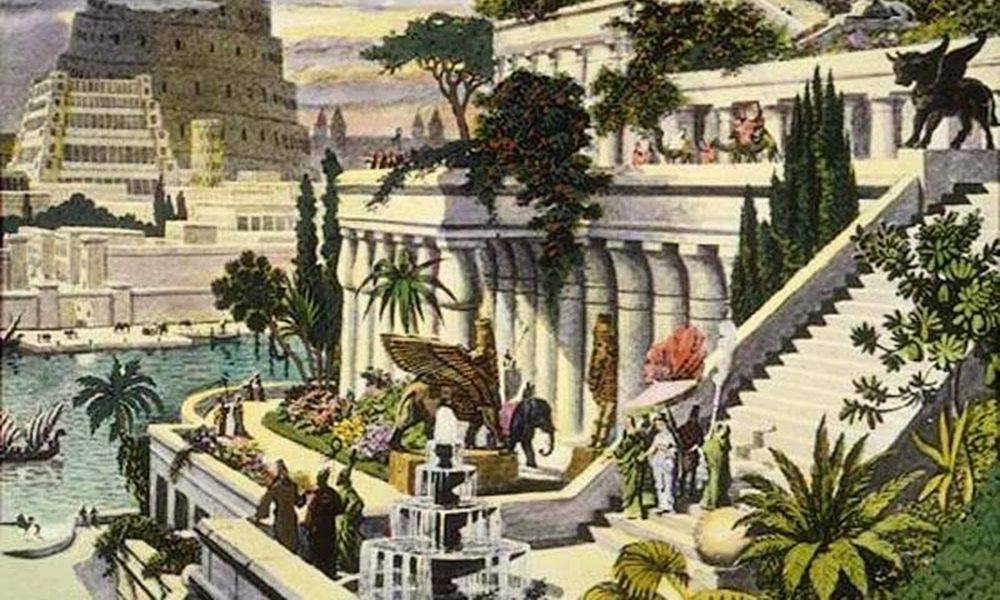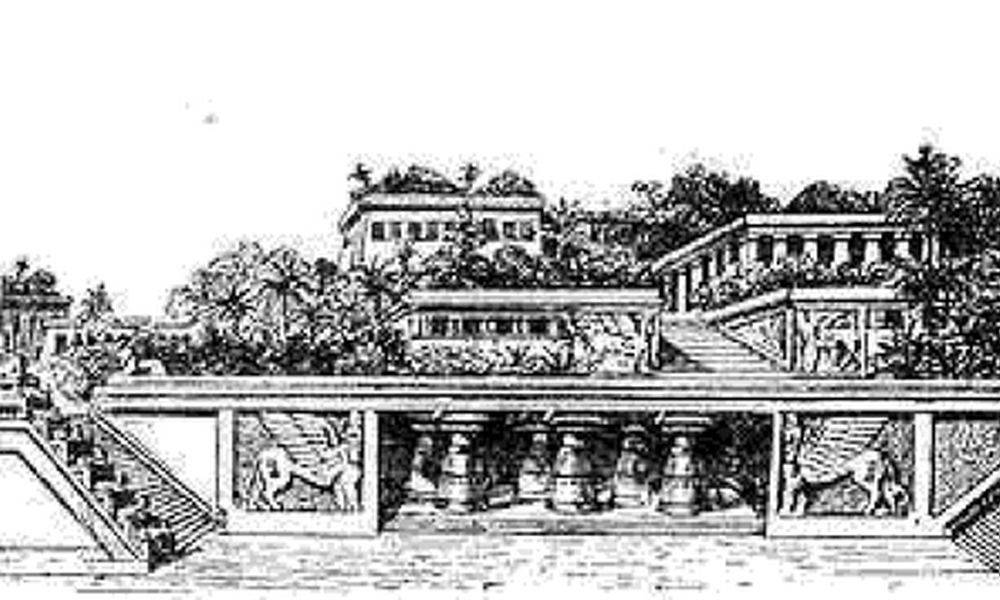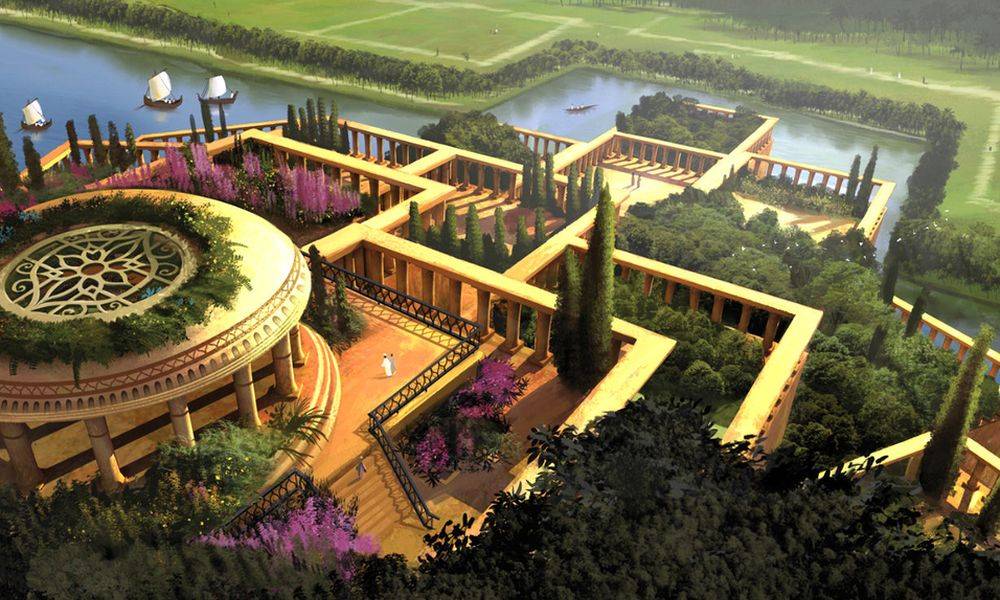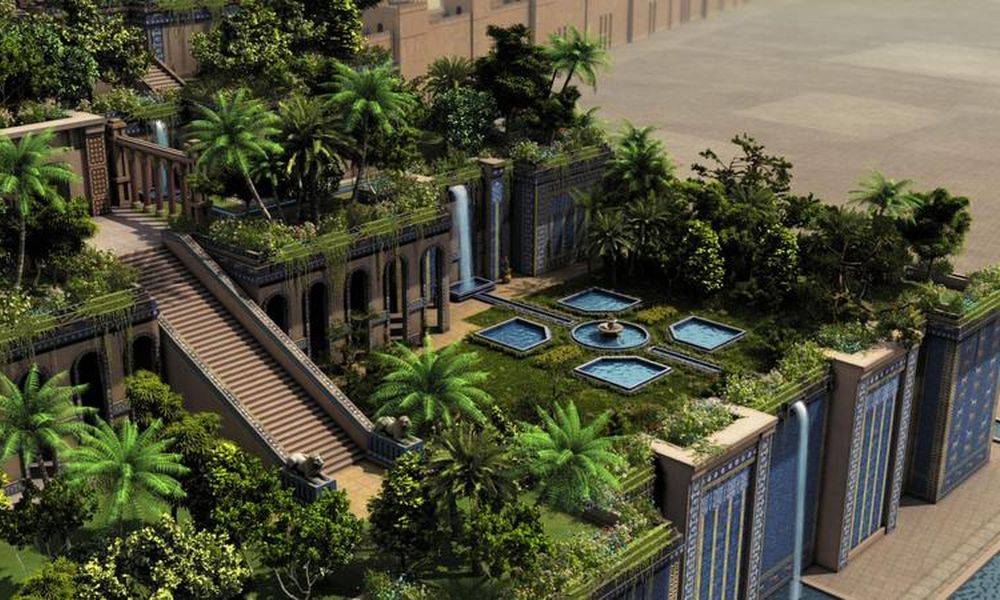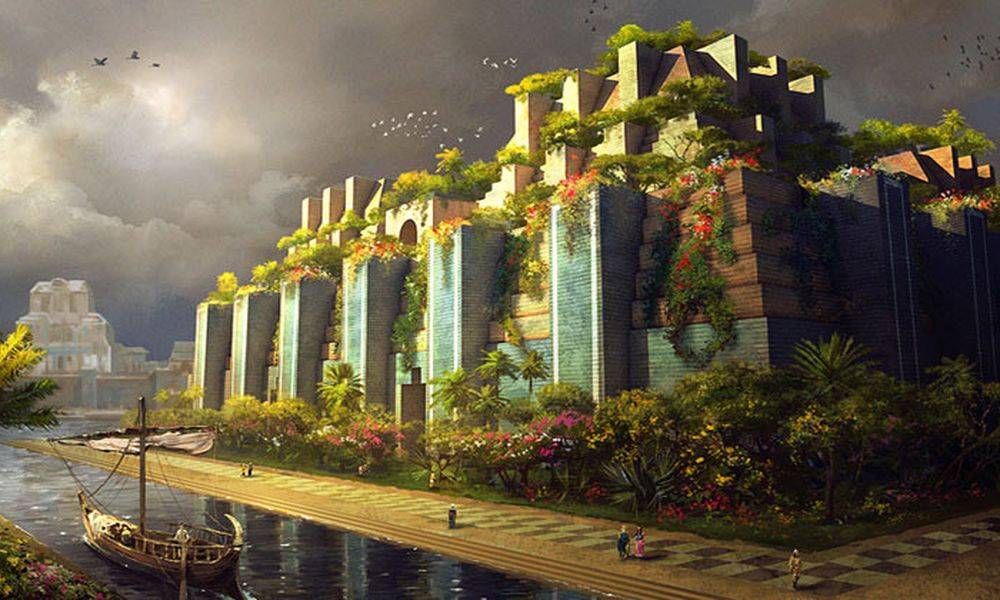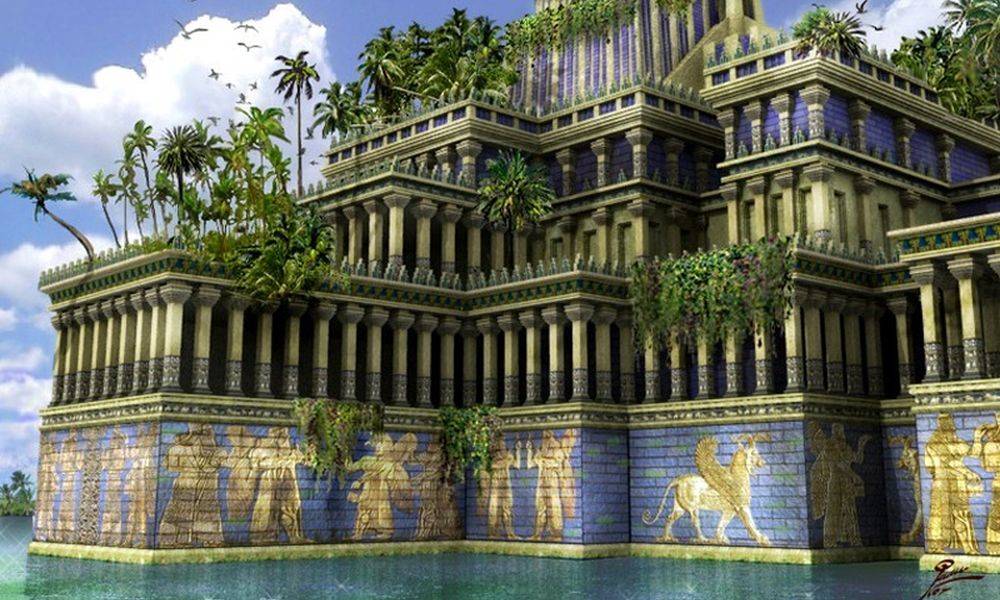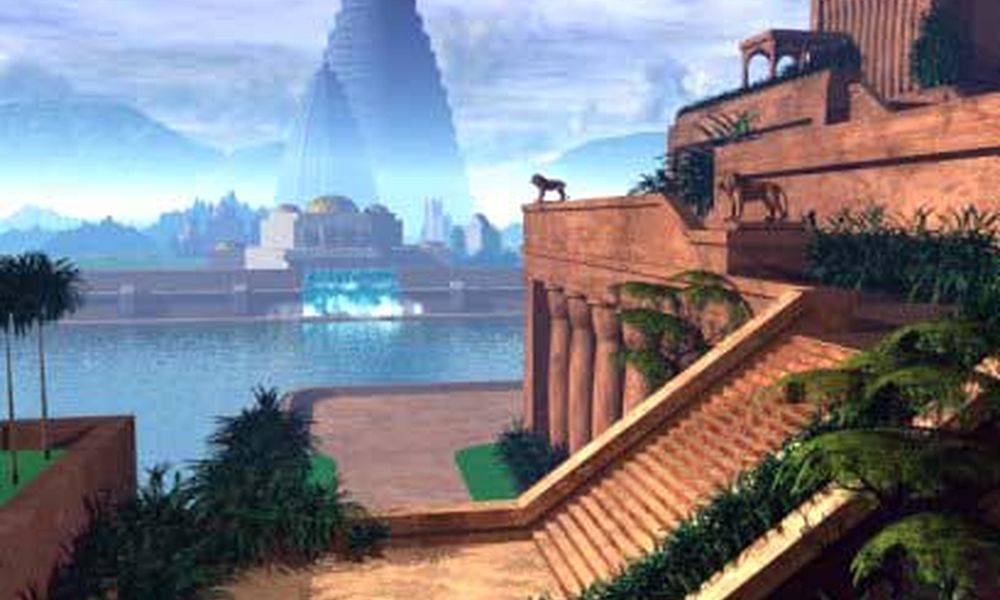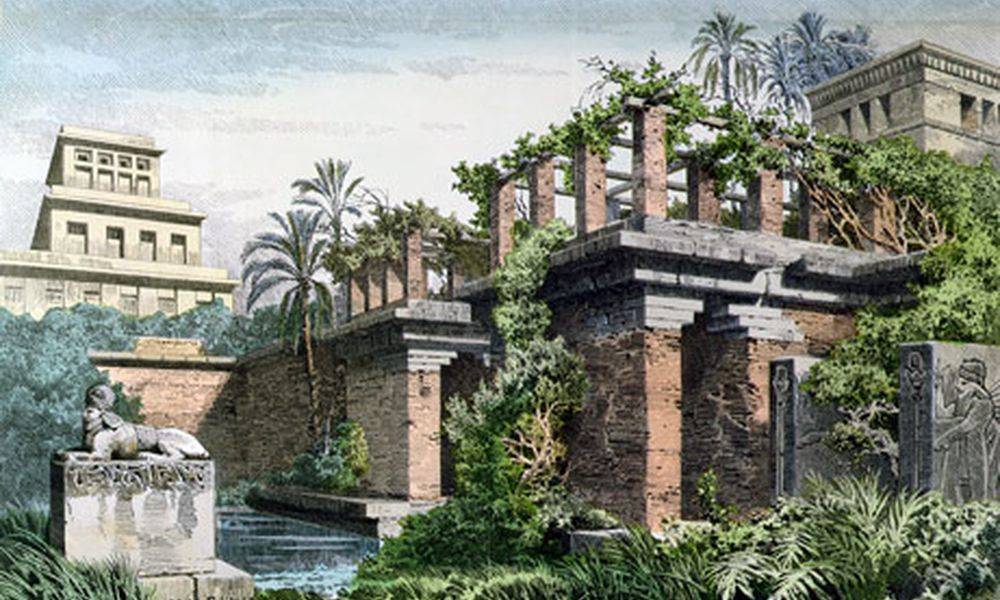The hanging gardens of Babylon are a set of gardens located in the ancient city of Babylon, Iraq. Their beauties make them inscribed on the ancient lists of the wonders of the world, and they appear today on the canonical list. But despite their descriptions by various authoritative people, this wonder of the world is the most questionable. Some even wonder whether they actually existed, for if one has archaeological traces of most other wonders of the world, or at least tangible evidence of their realities, for the gardens of Babylon, it is much more difficult to " evidence.
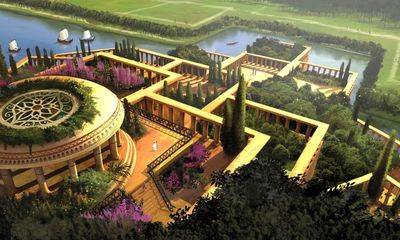
Gardens of Babylon
Documentary sources
The main difficulty encountered when referring to documentary sources concerning the gardens of Babylon is that these sources are indirect, ie they are testimonies based on other testimonies. On the quantity of documents available only two are worthy of interest:
Flavius Josephus
Flavius Josephus was a Roman historiographer of the first century. In a work he wrote a short description of the gardens of Babylon from a book written by Bérose, a Chaldean Babylonian priest who lived in the 4th century BC and wrote "Babyloniaca" a book telling the story of the city as far as Nebuchadnezzar. This ancient book is lost, it has come down to us only by quotations from more recent authors.
Diodorus of Sicily
Diodorus of Sicily is a historian of the first century BC, who in a biography of Alexander the Great reproduces the description of the gardens of Babylon, which Ctesias of Cnidus wrote in his book Persica. But recent studies seem to indicate that this description is a later addition to the text of Ctesias, and that the source which enabled him to write it was the same as that of Quinte Curce, the two descriptions being rather similar.
There are a few other texts on which to base oneself: that of the geographer Strabo (In the 1st century BC) in his work "Geography" in which he describes the gardens from Greek authors, that of Quinte Curce, a Roman historian of the 1st century, who also wrote a description of the gardens of Babylon in his book "Histoire d'Alexandre" (Description derived from earlier Greek texts), and finally Philon de Bysance, who listed the 7 wonders of the World in his book "De septem orbis spectaculis ". He lived in the third century BC.
With such ancient texts it seems impossible to doubt the existence of these gardens, but to take a closer look one can think that these authors added passages on the gardens of Babylon while the authors on which they based did not mention it. It is plausible for several reasons: Clitarchus, the author of the biography of Alexander the Great, which served as the basis of Diodorus of Sicily, could have invented them on the basis of actually existing royal gardens. The Greek authors prior to Quinte Curce are not credible.
Did the gardens really exist?
Arguments proving that this is not the case
If we still ask ourselves this question today, it is because there are big doubts about their lives. The first reason why it is possible that they never existed is that the archaeological investigations undertaken have nothing reported while other buildings of Babylon, such as the ramparts or the great palace have been perfectly identified. Moreover these excavations covered a large area of the ancient city and there are few places where these gardens could be. Another argument, the testimony of Herodotus: This high personage lived in the 5th century BC, he is considered the first historian of humanity, in the sense that it was the first to take an interest in the history of civilizations the previous. He has written a number of books on history but also on geography, without limiting himself to the world around him. A great traveler, he knew Babylon well for a time. If a person could describe the gardens, it would have been him, but strangely his account of the visit of the city does not describe at any time those gardens which should have been among the main monuments to be quoted.
Another argument, the ancient Greek authors. It is on the basis of their texts that Quinte Curce and Strabo wrote their descriptions. These authors are doubtful because they lived in ancient times when rare writings were made on the basis of oral description that could easily be diverted. Moreover, each civilization wants to put forward its power, it is normal that the descriptions are always exaggerated. This is the case of the ramparts of Babylon for example, of which Herodotus estimates the height to 100m which is architecturally impossible.
There are no archaeological traces, the chief historian of the time, who does not speak of it, of ancient Greek authors doubtful: Did the gardens of Babylon really exist?
Arguments proving their existences
First of all, archaeological research is not finished in Babylon. While much of the terrain has been identified, there are still (and increasingly restricted) areas in which the remains of the hanging gardens may be hidden. Then the city of Babylon was not famous only for its hanging gardens but especially for its ramparts. It is curious that the gardens had supplanted the ramparts because they were obviously much more impressive, still according to documents of the time. It is only Philo de Bysance has put forward the gardens in his list (since become canonical) but at the time the visitors of the city were especially surprised by the ramparts. It is not so surprising that gardens are not mentioned so often in the documents of the time.
What if the gardens were elsewhere?
Rather than believing in their nonexistence one may wonder if the gardens were not in another city. This is the thesis of Stéphanie Dalley, Assyriologist, who assumes that the gardens were actually in Nineveh, a town further south, the former capital of Assyria. It is based on the confusion found in some ancient texts between Nineveh and Babylon, two close and rival capitals. Nebuchadnezzar II attacked and vanquished the Assyrians and formed a much larger kingdom. Now the Assyrians knew the techniques of irrigation and had the capacity to make gardens at height. They had already realized it, they knew how to make the water rise by means of worms for example. There is an engraving of a high garden in Nineveh (engraving preserved at the British Museum) which could be the real gardens. But as nothing is simple for this movement, a careful study of this engraving shows that if some trees seem to grow well beyond a terrace, it is likely that the Assyrian artist wanted to make an impression of perspective and represent the trees beyond the terrace.
The thesis of location error is quite possible, it is supported by the assumption that the hanging gardens were located in Babylon due to the particular status of the city in ancient literature, symbol of the Orient and residence of legendary figures. Hence, because of the distortion in the transmission of the memory of the Assyrian royaus gardens, they would have been "implanted" in Babylon, a prestigious city whose memory has been preserved rather than in a completely forgotten city.
Stéphanie Dalley was preceded by some authors who considered during the 20th century that these gardens were elsewhere. The first time it was in 1979 by the German W. Nagel in his book "Where were the Hanging Gardens" located in Babylon? He hypothesizes that there were two gardens in two different places, a Neo-Babylonian and a Persian, which makes it possible to conform with the representation of Koldewey, expressed below. Let us also mention Mr. S. Damerji, who, in a work written in Arabic whose French title might be "Where were the hanging gardens of Babylon?", Imagines another place for the location of the gardens.
Location
And it is precisely their sites that are at the origin of a recent controversy. And if the archaeological traces have not yet been found because they are simply not where they are sought? What if the gardens of Babylon were not in Babylon? This is the thesis of the Assyriologist Stéphanie Dalley of Oxford who studied the problem and located the gardens in Nineveh, further south.
However, if they have existed, and are supposed to be, they are supposed to have been in the city of Babylon, an ancient city whose ruins are currently in Iraq, 100 km south of Baghdad, near of the city of Hilla. We are here in the heart of Mesopotamia, along the Euphrates. It is the most oriental of the Seven Wonders of the Ancient World, the only one that is neither Egyptian nor Greek. Its presence on the list is due to its great beauty as well as to the technical feat that allowed to raise the water necessary for the gardens at height, whereas for the other wonders, it is mostly simply their majesty that allows them to be on the list.
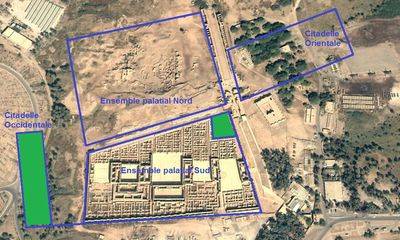
Location
As archaeologists have not found traces of the gardens of Babylon it is impossible to locate them exactly, but the archaeological excavations undertaken on the site of ancient Babylon have shown that they could be on the two sites indicated in green on this card. Unfortunately, nothing is simple with this wonder of the world, and these two assumptions are broken by the fact that if the small area was well constructed of vaulted columns, it is too small to have been the location of these gardens. As for the second supposition, it is tempting, but would correspond more to a classical palatial garden.
Learn more about the Location of the gardens.
Description
Here too it is quite difficult to reconstitute the gardens. To do this we must trust Philo de Bysance and Diodorus, two ancient authors who have described them. Alas, their testimony does not really agree. Other documents also describe these gardens, they make it possible to improve the idea that one is making, but since not all do not say the same thing it is probable that the truth is a little a mixture of all that.
Philo delivers more an image of the gardens of Babylon than a real description in his book, "De septem orbis spectaculis." It speaks of a garden floating in the air, and it is this image that has spread through the ages to reach this day. On the contrary, Diodorus makes an analytical description, albeit partial, of the building.
Let's start with what is unanimous: All speak of a garden in height based on a square plan of about 120m of side. Diodorus speaks of staggered platforms. The gardens were high, that seems obvious from the different descriptions. All speak of stone columns which support a vegetable ceiling on which one has spread of the earth. Quinte-Curce describes a stone ceiling above which the earth has been spread out. The material used is brick for Strabo, which is in keeping with the construction habits of the time in this region. The other authors indicate that it is stone, which is rather astonishing, the stone being rarely used at that time. Strabo also indicates that the pillars formed a vault at their junction points, he is the only one to write it. Now the presence of an arch seems so obvious the weight of the terraces is supposed to be heavy, so a vault is the best solution to distribute the impressive loads of the ceiling on the columns. There is no doubt that a flat ceiling would not have held the garden load, whatever the methods of supporting it (columns or walls)
The upper part seems to have had several floors, like superimposed terraces, whence the representations below, almost all made with a succession of terraces. In ancient Greek one distinguishes by grammar the uniqueness, the duality of the multiplicity. Now these texts use multiplicity to give the number of terraces, it proves that there were at least three. When the height of the gardens is ignored simply because the notion of size is difficult to apprehend, there are too many differences between our units of measurement and those of the time. Quinte Curce compares the height of t he gardens with that of the ramparts, but the description of the ramparts of the period oscillates between 22m and 100m, which is, let us admit, of great vagueness. (The estimate at 100m is unanimously rejected, of course, it emanates from Herodotus, the one at 22m from Strabo and Diodore)
The garden probably required a lot of water. This one was brought by a mechanical system (always to take to the conditional, it is not sure). According to Strabo it would be a worm driven by men. The water came from the Euphrates by an ingenious system of pipes.
We know nothing about the gardens themselves, we do not know the different species that were planted there and how they were structured. What can be said is that a garden in this area was a luxury that could not have the way of mortals, the water resources being too scarce to be wasted. Moreover, centuries later, when Islam reigned over the arid lands, the gardens were to be seen as heavenly spaces. (See the Symbolism of the Taj Mahal on this subject.
Here is Strabo, a Greek geographer of the first century, in his book Geography, Volume XVI.
This garden, an immense square of 4 plèthres on the side, consists of several tiers of terraces supported by arcades whose vaults fall on cubic pillars. These pillars are hollow and filled with earth, which has made it possible to bring in the largest trees. Pillars, arches and arches were built only with fire-bricks and asphalt. We reach the upper terrace by the steps of an immense staircase, along which have been placed slugs or hydraulic screws, designed to raise the water of the Euphrates into the garden, and which operate without interruption, effort of men committed to this care.
See an other description of the gardens, more complete.
History
The origins of the hanging gardens of Babylon go back to Nebuchadnezzar II, according to Beris' thesis. He was king of Babylon in the 6th century BC and it was during his reign that his kingdom was the largest, it was at its peak. Nebuchadnezzar II had many monuments and temples built in his capital Babylon. According to legend he would have built the gardens for his wife who came from Mediea, a mountainous region of western Iran where the vegetation was denser than in the Babylonian desert. Another tenacious legend tells that these gardens were created long before under Semiramis, the name that this legend attributed to the Assyrian queen Sammuramat who lived in the eighth century BC, but this hypothesis is not credible, the techniques of construction of such a garden are not compatible with the knowledge of the time.
It is also unclear why and when these gardens were destroyed. There is very little information, and this is one of the reasons why they have little to doubt their lives.
Why do we say they were suspended?
Why are we talking about "hanging gardens" of Babylon? Would they have been really suspended?
In fact it is completely false, this word probably appeared late and did not correspond to the reality of the gardens which could never have been suspended, being too heavy. It was in fact a succession of terraces (according to several descriptions) which gave it an airy air, and it was this impression of lightness that made the ulterior authors say that they were suspended. Philon de Bysance, one of the first people to have described them, has focused on the aerial side of the gardens, and it is his narrative that now prodominates, which explains why some still imagine that these gardens were actually suspended , which is of course false.
According to several descriptions, the gardens were placed in the air by colonnades forming a vault, above which had been placed a layer of earth, then the trees and plants. One can imagine the weight of the whole ... It is moreover because they must be extremely heavy that the description of the vaults of Strabo seems the most plausible, the other people speaking of this monument indicating rather a flat ceiling, little in accordance with the laws of physics.
Why is this one of the 7 wonders of the world?
The list of the 7 wonders of the world has highlighted outstanding monuments by their beauties, their technical exploits, their peculiarities in the ancient world. The hanging gardens of Babylon have characteristics identical to those of the large Assyrian and Persian landscapes, but their uniqueness lies in the architectural infrastructure that supports them. There is no such thing in the sources of the Near East, which puts forward two hypotheses:
- Or this infrastructure is an invention of classical authors, who based themselves on modest buildings and, for reasons peculiar to them, have transformed them into the monument that we know today,
- Or it is proven is in this case it is a unique case, a specificity that deserved to be in the list of the 7 wonders of the World.
The representations
During the XIXth century: Rondelet
The first serious attempt at reconstitution of the gardens of Babylon dates from 1814, it is due to J. Rondelet. The latter represents them in his book "L'art de bâtir" (Paris, 1814). This reconstruction makes it possible to verify that the ancient testimonies are of a correct reliability whatever only partial, and that they are sufficient to sketch the monument. In 1899 Koldewey carried out a series of excavation campaigns on the site of Babylon and discovered the location of the gardens. Unfortunately for him it is denied a little later, the ruins being indeed those of Babylon but not that of the hanging gardens. The hope that has arisen during this course of time has allowed archaeologists of the world to believe that it is possible to find vestiges even if they are hypothetical, it was confirmed by the discoveries - shortly before - for the temple of Artemis or the mausoleum of Halicarnassus, both upgraded by British archaeologists.
The representation of Koldewey
In 1918 the German archaeologist reconstructed the hanging gardens based on his knowledge of the excavations made after several campaigns on the ground. He imagines a garden above the central part of a building next to the Babylonian palace. Below there were 14 vaulted rooms serving as a reserve as obscure, and above it speculates that - perhaps - a building would have interposed between the ground and the gardens, a sort of additional floor that would have permitted the gardens to be on the same level as the ground floor of the palace. It assumes that the peripheral corridor of supporting columns could have formed a kind of peristyle around the garden.
The others representations
the representations of the twentieth century are based essentially on that of Koldewey, which is the authoritative one. It must be said that he was a specialist of the monument. Most of them are similar and add to it a number of innovations, including, for example, the water supply system that was not represented in the 19th century. Moreover this addition highlights the inadequacy between this water supply and the real possibilities to do so, and this has partly discredited Koldewey's work. But in the absence of evidence, he continued to be a reference in the matter. These very few changes reflect mainly the lack of documentation on which to base new hypotheses.
It must therefore be admitted that in every representation of the suspended gardens of Babylon there is a part of subjectivity due to the lacunae of the ancient texts. Graphic designers and other designers can only speculate what they were. The representations below are therefore essentially derived from their imaginations.
Antic representations
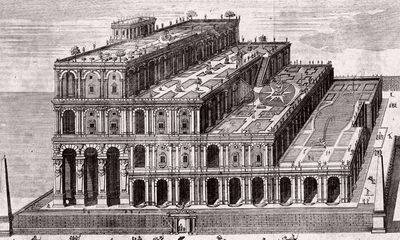
The gardens by Kircher
Athanasius Kircher was a 17th century German Jesuit. He was one of the leading scientific minds of his time. He worked in many fields (optics, acoustics, linguistics, medicine, etc.). He studied Oriental civilizations, and it was in this capacity that he realized this drawing of the hanging gardens of Babylon, according to a description he thought right, but which was mainly influenced by the Western vision of his time.
This drawing dates from 1726.
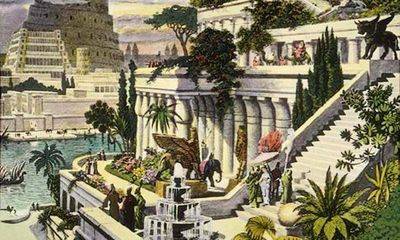
The gardens by Van Heemskerck
Maarten van Heemskerck is a sixteenth-century Dutch artist, portraitist and history painter. It is mainly known for its series of the 7 Wonders of the World (realized in 1572) which magnifies these monuments according to aesthetic criteria specific to its time. This representation of the hanging gardens of Babylon is thus largely imagined by the artist who is based on little documentation. This drawing dates from 1572.
See all the 7 wonders of the world by Maarten van Heemskerck.
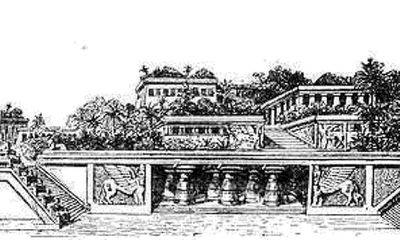
The Little Larousse, 1912
Dictionaries have always been the main source of information before the invention of the Internet. The Larousse, an institution in France, chose in 1912 to publish this drawing to illustrate the hanging gardens of Babylon.
Modern Representations
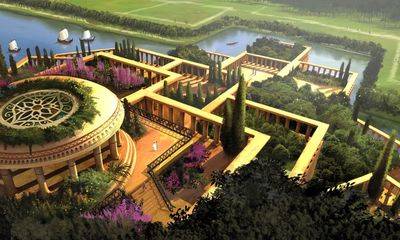
Gardens of Babylon
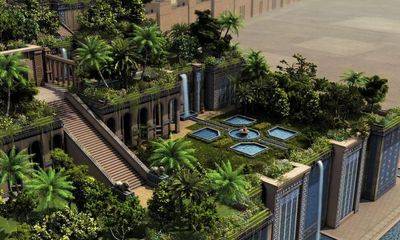
Gardens of Babylon
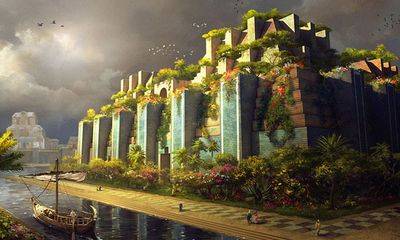
Gardens of Babylon
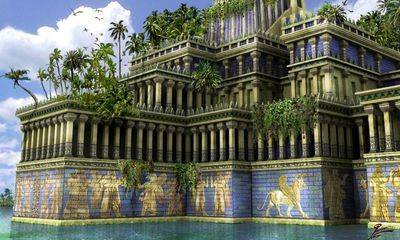
Gardens of Babylon
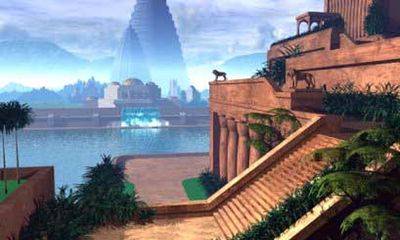
Gardens of Babylon
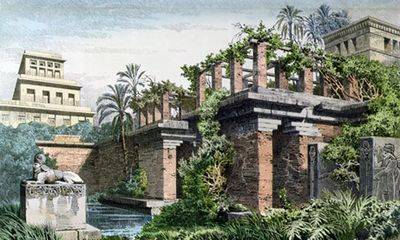
Gardens of Babylon
See also:





